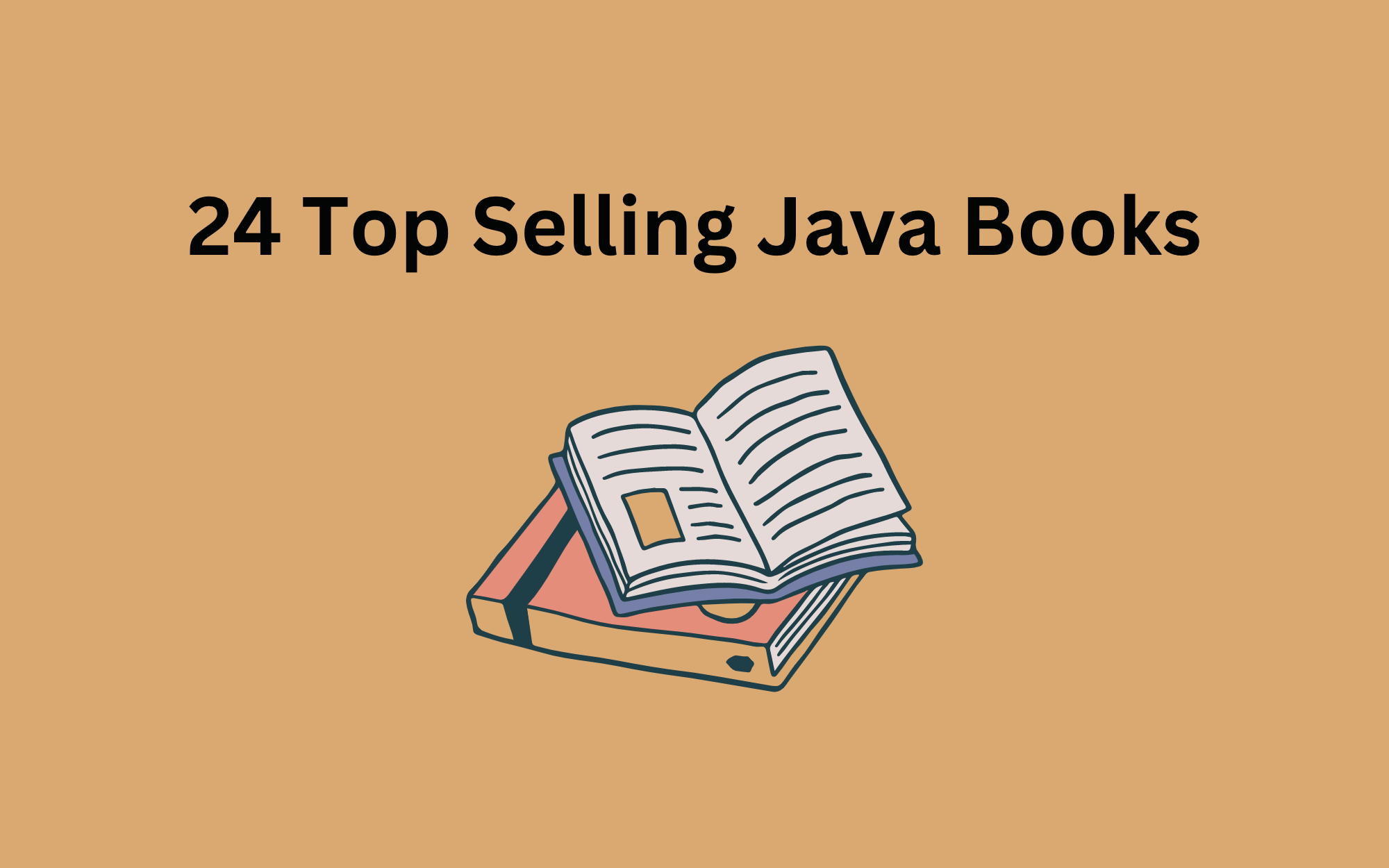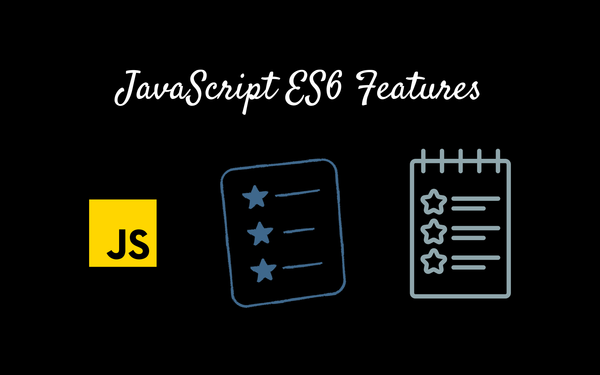24 Top-Selling Java Books in 2023
This article contains 20+ Java books that are most read by developers and students.

24 Top-rated Java Books for Beginners and Experienced Developers. The list of books includes Java programming to advanced Java and design patterns.
Java is a programming language created by James Gosling from Sun Microsystems (Sun) in 1991.
Java is a high-level, class-based, object-oriented programming language that is designed to have as few implementation dependencies as possible. It is a general-purpose programming language intended to let programmers write once, run anywhere (WORA),[17] meaning that compiled Java code can run on all platforms that support Java without the need to recompile.
Java Books for Beginners and Experienced Developers
Java is powering the innovation behind our digital world. Harness this potential with Java resources for student coders, hobbyists, developers, and IT leaders. One of the biggest stories is that Java turned 25 on May 23 last year.
As the Java ecosystem continues to thrive, enterprises around the world in both the private and public sectors continue to invest in Java, including in the commercial offering from Oracle, and Java SE Subscription.
Thousands of customers choose to run on this trusted platform with professional support around the clock in 17 languages for fast fixes and mission-critical applications, access to performance, stability, and security updates, and Java SE versions past end-of-public updates directly from the stewards of Java, access to critical bug fixes before they are included in publicly available releases, and much more.
Here is a list of the best books for both beginners and experienced developers.
1. Head First Java
Authors: Kathy Sierra & Bert Bates
Learning a complex new language is no easy task especially when it s an object-oriented computer programming language like Java.
Head First Java combines puzzles, strong visuals, mysteries, and soul-searching interviews with famous Java objects to engage you in many different ways. It’s fast, it’s fun, and it’s effective. And, despite its playful appearance, Head First Java is serious stuff: a complete introduction to object-oriented programming and Java.
You’ll learn everything from the fundamentals to advanced topics, including threads, network sockets, and distributed programming with RMI. And the new. the second edition focuses on Java 5.0, the latest version of the Java language and development platform. Because Java 5.0 is a major update to the platform, with deep, code-level changes, even more, careful study and implementation are required. So learning the Head First way is more important than ever.
2. Effective Java
Authors: Joshua Bloch
In Effective Java, Bloch explores new design patterns and language idioms that have been introduced since the second edition was released in 2008 shortly after Java SE6, including Lambda, streams, generics, and collections, as well as selected Java 9 features.
Java 7 and Java 8 introduced new features and functions including, forEach() method in Iterable interface, default and static methods in Interfaces, Functional Interfaces, and Lambda Expressions, Java Stream API for Bulk Data Operations on Collections, Java Time API, Collection API improvements, Concurrency API improvements, and Java IO improvements.
3. Java: The complete reference
Authors: Herbert Schildt
Java: The Complete Reference, Eleventh Edition explains how to develop, compile, debug, and run Java programs. Best-selling programming author Herb Schildt covers the entire Java language, including its syntax, keywords, and fundamental programming principles.
You’ll also find information on key portions of the Java API library, such as I/O, the Collections Framework, the stream library, and the concurrency utilities. Swing, JavaBeans, and servlets are examined and numerous examples demonstrate Java in action. Of course, the very important module system is discussed in detail.
This Oracle Press resource also offers an introduction to JShell, Java’s interactive programming tool. Best of all, the book is written in the clear, crisp, uncompromising style that has made Schildt the choice of millions worldwide.
4. Java: A beginners guide
Authors: Herbert Schildt
Fully updated for Java Platform, Standard Edition 11 (Java SE 11), Java: A Beginner’s Guide, Eighth Edition gets you started programming in Java right away.
Best-selling programming author Herb Schildt begins with the basics, such as how to create, compile, and run a Java program. He then moves on to the keywords, syntax, and constructs that form the core of the Java language.
The book also covers some of Java’s more advanced features, including multithreaded programming, generics, lambda expressions, modules, and Swing. As an added bonus, an introduction to JShell, Java’s interactive programming tool, is included. Best of all, it’s written in the clear, crisp, uncompromising style that has made Schildt the choice of millions worldwide.
5. Murach’s Java Programming
Authors: Joel Murach
This is the 5th edition of Murach’s classic Java book that’s trained thousands of developers in the last 15 years. Now fully updated to Java 9, this book helps any programmer learn Java faster and better than ever before:
- It’s the one Java book that presents object-oriented features like inheritance, interfaces, and polymorphism in a way that’s both understandable and useful in the real world.
- It offers new coverage of JavaFX, the date/time API, lambdas, and working with SQLite databases.
- It uses a self-paced approach that works whether you’re a beginner or have years of programming experience.
- It’s full of practical coding examples that enhance training and that provide starting code for new applications.
- It lets you practice what you’ve just learned at the end of every chapter, to solidify your skills.
- And it’s all done in the distinctive Murach style that has been training professional programmers for more than 43 years.
6. Java in a Nutshell: A desktop quick reference
Authors: Benjamin J. Evans
This updated edition of Java in a Nutshell not only helps experienced Java programmers get the most out of Java versions 9 through 11, but it’s also a learning path for new developers.
Chock full of examples that demonstrate how to take complete advantage of modern Java APIs and development best practices, this thoroughly revised book includes new material on Java Concurrency Utilities.
The book’s first section provides a fast-paced, no-fluff introduction to the Java programming language and the core runtime aspects of the Java platform. The second section is a reference to core concepts and APIs that explains how to perform real programming work in the Java environment.
- Get up to speed on language details, including Java 9-11 changes
- Learn object-oriented programming, using basic Java syntax
- Explore generics, enumerations, annotations, and lambda expressions
- Understand basic techniques used in object-oriented design
- Examine concurrency and memory, and how they’re intertwined
- Work with Java collections and handle common data formats
- Delve into Java’s latest I/O APIs, including asynchronous channels
- Use Nashorn to execute JavaScript on the Java Virtual Machine
- Become familiar with development tools in OpenJDK
7. Introduction to Java Programming and Data Structures
Authors: Y. Daniel Liang
Designed to support an introductory programming course, Introduction to Java Programming and Data Structures teaches you concepts of problem-solving and object-orientated programming using a fundamentals-first approach.
Beginner programmers learn critical problem-solving techniques then move on to grasp the key concepts of object-oriented, GUI programming, data structures, and Web programming.
This course approaches Java GUI programming using JavaFX, which has replaced Swing as the new GUI tool for developing cross-platform-rich Internet applications and is simpler to learn and use. The 11th edition has been completely revised to enhance clarity and presentation, and includes new and expanded content, examples, and exercises.
8. Modern Java in Action: Lambdas, Streams, Functional and Reactive Programming
Authors: Raoul-Gabriel Urma, Mario Fusco, et al.
Manning’s bestselling Java 8 book has been revised for Java 9 and Java 10! In Modern Java in Action, readers build on their existing Java language skills with the newest features and techniques.
The release of Java 9 builds on what made Java 8 so exciting. In addition to Java 8’s lambdas and streams, Java 9 adds a host of new features of its own. It includes new library features to support reactive programming, which gives users new ways of thinking about programming and writing code that is easier to read and maintain.
Purchase of the print book includes a free eBook in PDF, Kindle, and ePub formats from Manning Publications.
9. Java: Learn Java in One Day and Learn It well. Java for beginners with Hands-on Project.
Authors: LCF Publishing and Jamie Chan.
Have you always wanted to learn computer programming but are afraid it’ll be too difficult for you? Or perhaps you know other programming languages but are interested in learning the Java language fast?
This book is for you. You no longer have to waste your time and money trying to learn Java from boring books that are 600 pages long, expensive online courses, or complicated Java tutorials that just leave you more confused and frustrated.
10. Java Performance: In-depth Advice for Tuning and Programming Java 8, 11 and Beyond
Authors: Scott Oaks.
Coding and testing are generally considered separate areas of expertise. In this practical book, Java expert Scott Oaks takes the approach that anyone who works with Java should be adept at understanding how code behaves in the Java Virtual Machine—including the tunings likely to help performance.
This updated second edition helps you gain in-depth knowledge of Java application performance using both the JVM and the Java platform.
Developers and performance engineers alike will learn a variety of features, tools, and processes for improving the way the Java 8 and 11 LTS releases perform.
While the emphasis is on production-supported releases and features, this book also features previews of exciting new technologies such as ahead-of-time compilation and experimental garbage collections.
- Understand how various Java platforms and compilers affect performance
- Learn how Java garbage collection works
- Apply four principles to obtain best results from performance testing
- Use the JDK and other tools to learn how a Java application is performing
- Minimize the garbage collector’s impact through tuning and programming practices
- Tackle performance issues in Java APIs
- Improve Java-driven database application performance
11. Java Coding Problems: Improve your Java Programming skills by solving real-world coding challenges
Authors: Anghel Leonard.
Develop your coding skills by exploring Java concepts and techniques such as Strings, Objects and Types, Data Structures and Algorithms, Concurrency, and Functional programming
- Solve Java programming challenges and get interview-ready by using the power of modern Java 11
- Test your Java skills using language features, algorithms, data structures, and design patterns
- Explore areas such as web development, mobile development, and GUI programming
12. Java All-in-One For Dummies
Authors: Doug Lowe.
Knowing Java is a must-have programming skill for any programmer. It’s used in a wide array of programming projects—from enterprise apps and mobile apps to big data, scientific, and financial uses.
The language regularly ranks #1 in surveys of the most popular language based on the number of developers, lines of code written, and real-world usage. It’s also the language of choice in AP Computer Science classes taught in the U.S.
This guide provides an easy-to-follow path from understanding the basics of writing Java code to apply those skills to real projects.
Split into eight mini-books covering core aspects of Java, the book introduces the basics of the Java language and object-oriented programming before setting you on the path to building web apps and databases.
- Get up to speed on Java basics
- Explore object-oriented programming
- Learn about strings, arrays, and collections
- Find out about files and databases
Step-by-step instructions are provided to ensure that you don’t get lost at any point along the way.
13. Think Java: How to Think Like a Computer Scientist
Authors: Allen B. Downey
Think Java is a hands-on introduction to computer science and programming used by many universities and high schools around the world. Its conciseness, emphasis on vocabulary, and informal tone make it particularly appealing for readers with little or no experience.
The book starts with the most basic programming concepts and gradually works its way to advanced object-oriented techniques.
In this fully updated and expanded edition, authors Allen Downey and Chris Mayfield introduce programming as a means for solving interesting problems.
Each chapter presents material for one week of a college course and includes exercises to help you practice what you’ve learned. Along the way, you’ll see nearly every topic required for the AP Computer Science A exam and Java SE Programmer I certification.
- Discover one concept at a time: tackle complex topics in a series of small steps with multiple examples
- Understand how to formulate problems, think creatively about solutions, and develop, test, and debug programs
- Learn about input and output, decisions and loops, classes and methods, strings and arrays, recursion and polymorphism
- Determine which program development methods work best for you, and practice the important skill of debugging
14. Java Cookbook: Problems and Solutions for Java Developers
Authors: Ian F. Darwin
Java continues to grow and evolve, and this cookbook continues to evolve in tandem. With this guide, you’ll get up to speed right away with hundreds of hands-on recipes across a broad range of Java topics.
You’ll learn useful techniques for everything from string handling and functional programming to network communication.
Each recipe includes self-contained code solutions that you can freely use, along with a discussion of how and why they work.
If you’re familiar with Java basics, this cookbook will bolster your knowledge of the language and its many recent changes, including how to apply them in your day-to-day development. This updated edition covers changes through Java 12 and parts 13 and 14.
Recipes include:
- Methods for compiling, running, and debugging
- Packaging Java classes and building applications
- Manipulating, comparing, and rearranging text
- Regular expressions for string and pattern matching
- Handling numbers, dates, and times
- Structuring data with collections, arrays, and other types
- Object-oriented and functional programming techniques
- Input/output, directory, and filesystem operations
- Network programming on both client and server
- Processing JSON for data interchange
- Multithreading and concurrency
- Using Java in big data applications
- Interfacing Java with other languages
15. Reactive Systems in Java: Resilient, Event-Driven Architecture with Quarkus
Authors: Clement Escoffier
Reactive systems and event-driven architecture are becoming indispensable to application design, and companies are taking note. Reactive systems ensure that applications are responsive, resilient, and elastic no matter what failures or errors may be occurring, while event-driven architecture offers a flexible and composable option for distributed systems.
This practical book helps Java developers bring these approaches together using Quarkus 2.x, the Kubernetes-native Java framework.
Clement Escoffier and Ken Finnigan show you how to take advantage of event-driven and reactive principles to build robust distributed systems, reducing latency and increasing throughput, particularly in microservices and serverless applications.
You’ll also get a foundation in Quarkus to help you create true Kubernetes-native applications for the cloud.
- Understand the fundamentals of reactive systems and event-driven architecture
- Learn how to use Quarkus to build reactive applications
- Combine Quarkus with Apache Kafka or AMQP to build reactive systems
- Develop microservices that utilize messages with Quarkus for use in event-driven architectures
- Learn how to integrate external messaging systems, such as Apache Kafka, with Quarkus
- Build applications with Quarkus using reactive systems and reactive programming concepts
16. The Complete Coding Interview Guide in Java
Authors: Anghel Leonard
Explore a wide variety of popular interview questions and learn various techniques for breaking down tricky bits of code and algorithms into manageable chunks.
Key Features:
- Discover over 200 coding interview problems and their solutions to help you secure a job as a Java developer
- Work on overcoming coding challenges faced in a wide array of topics such as time complexity, OOP, and recursion
- Get to grips with the nuances of writing good code with the help of step-by-step coding solutions
17. Core Java, Volume II–Advanced Features
Authors: Car Horstmann
Core Java® has long been recognized as the leading, no-nonsense tutorial and reference for experienced programmers who want to write robust Java code for real-world applications. Now, Core Java®, Volume II–Advanced Features, Eleventh Edition, has been updated to reflect Java SE 9.
Core Java, Vol. II covers advanced user-interface programming and the enterprise features of the Java SE 9 platform. It carefully explains the most important language and library features and shows how to build real-world applications with thoroughly tested examples.
The example programs have been carefully crafted to be easy to understand as well as useful in practice, so you can rely on them as the starting point for your own code. All of the code examples have been rewritten to reflect modern Java best practices and code style.
The critical new features introduced with Java SE 9 are all thoroughly explored with the depth and completeness that readers expect from this title.
As in previous editions, all code is easy to understand and displays modern best-practice solutions to the real-world challenges faced by professional developers. All code examples are updated to reflect Java 9 enhancements.
Complete descriptions of new language and platform features are highlighted and integrated with insightful explanations of modern Java programming techniques. You’ll learn all you need to build robust production software with streams, files, and regular expressions.
18. Starting Out with Java: Early Objects
Authors: Tony Gaddis
A clear and student-friendly way to teach the fundamentals of Java.
Starting Out with Java: Early Objects, 6th Edition features Tony Gaddis’s accessible, step-by-step presentation which helps beginning students understand the important details necessary to become skilled programmers at an introductory level.
Gaddis motivates the study of both programming skills and the Java programming language by presenting all the details needed to understand the “how” and the “why”–but never losing sight of the fact that most beginners struggle with this material.
His approach is gradual and highly accessible, ensuring that students understand the logic behind developing high-quality programs.
In Starting Out with Java: Early Objects, Gaddis looks at objects–the fundamentals of classes and methods–before covering procedural programming. As with all Gaddis texts, clear and easy-to-read code listings, concise and practical real world examples, and an abundance of exercises appear in every chapter.
Updates to the 6th Edition include revised, improved problems throughout and three new chapters on JavaFX.
19. Intro to Java Programming, Comprehensive Version
Authors: Y. Daniel Liang
Introduction to Java Programming and Data Structures seamlessly integrates programming, data structures, and algorithms into one text.
With a fundamentals-first approach, the text builds a strong foundation of basic programming concepts and techniques before teaching students object-oriented programming and advanced Java programming.
Liang explains programming in a problem-driven way that focuses on problem-solving rather than syntax, illustrating basic concepts by example and providing a large number of exercises with various levels of difficulty for students to practice.
The 12th Edition is completely revised in every detail to enhance clarity, presentation, content, examples, and exercises.
20. OCP Oracle Certified Professional Java SE 11 Developer Practice Tests
Authors: Scott Selikoff
In Improve your preparation for the OCP Java SE 11 Developer exam with these comprehensive practice tests.
OCP Oracle Certified Professional Java SE 11 Developer Practice Tests: Exam 1Z0-819 and Upgrade Exam 1Z0-817 offers readers over 1000 practice questions to help them hone their skills for the challenging 1Z0-819 exam as well as the 1Z0-817 upgrade exam.
Covering all the objective domains that help readers master the crucial subject areas covered by the exam, OCP Oracle Certified Professional Java SE 11 Developer Practice Tests provides domain-by-domain questions as well as additional bonus practice exams to further solidify the reader’s mastery of its subjects. This book covers topics like:
- Understanding Java Technology and Environment
- Working with Java Operators, Primitives, and Strings
- Creating Methods and Lambda Expressions
- Designing Classes, Interfaces, Enums, and Annotations
- Writing Functional Interfaces and Streams
- Building Modules and Migrating Applications to Modules
- Applying I/O, NIO.2, JDBC, Threads, and Concurrency
- Secure Coding in Java SE Application
- And much more
Perfect for anyone studying for the OCP Java SE 11 Developer and Upgrade exams, as well as all those who wish to brush up on their Java programming skills, OCP Oracle Certified Professional Java SE 11 Developer Practice Tests: Exam 1Z0-819 and Upgrade Exam 1Z0-817 is an indispensable resource that has a place on the bookshelf of every Java enthusiast, professional, and student.
21. Microservices Patterns: With examples in Java
Authors: Chris Richardson
44 reusable patterns to develop and deploy reliable production-quality microservices-based applications, with worked examples in Java.
Microservices Patterns teaches you 44 reusable patterns to reliably develop and deploy production-quality microservices-based applications.
This invaluable set of design patterns builds on decades of distributed system experience, adding new patterns for composing services into systems that scale and perform under real-world conditions.
More than just a patterns catalog, this practical guide with worked examples offers industry-tested advice to help you design, implement, test, and deploy your microservices-based application.
Key Features
- 44 design patterns for building and deploying microservices applications
- Drawing on decades of unique experience from author and microservice architecture pioneer Chris Richardson
- A pragmatic approach to the benefits and the drawbacks of microservices architecture
- Solve service decomposition, transaction management, and inter-service communicatio
22. Introduction to Java Programming, Brief Version
Authors: Y. Daniel Liang, Y. Liang
A fundamentals-first introduction to basic programming concepts and techniques.
Designed to support an introductory programming course, Introduction to Java Programming and Data Structures, Brief Version teaches you concepts of problem-solving and object-orientated programming using a fundamentals-first approach.
As beginner programmers, you learn critical problem-solving techniques then move on to grasp the key concepts of object-oriented, GUI programming, advanced GUI, and Web programming using JavaFX.
This course approaches Java GUI programming using JavaFX, which has replaced Swing as the new GUI tool for developing cross-platform-rich Internet applications and is simpler to learn and use.
The 11th edition has been completely revised to enhance clarity and presentation, and includes new and expanded content, examples, and exercises.
23. Murach’s Java Servlets and JSP, 3rd Edition
Authors: Joel Murach
This new edition of Murach’s Java Servlets and JSP makes it easier than ever for Java developers to master web programming. It shows how to install and use the Tomcat server and the NetBeans IDE.
It shows how to use JSPs and servlets to build secure and well-structured web applications that implement the MVC pattern. It shows how to use sessions, cookies, JavaBeans, EL, JSTL, and custom tags.
It shows how to use JDBC or JPA to work with a MySQL database. It shows how to work with JavaMail, SSL connections, authentication, encryption, filters, and listeners. It even includes an introduction to JSF to expand your perspective on Java web programming.
These are the skills that you need to build professional Java web applications using servlets and JSP. A great read for any Java developer.
24. Building Java Programs: A Back to Basics Approach
Authors: Stuart Reges
Building Java Programs: A Back to Basics Approach introduces new concepts and syntax using a spiral approach, ensuring students are thoroughly prepared as they work through CS1 material.
Through the first four editions, Building Java Programs and its back-to-basics approach have proven remarkably effective.
The 5th Edition has been extensively updated with the incorporation of JShell integration, improved loop coverage, rewritten and revised case studies, examples, updated collection syntax and idioms, expanded self-check and programming exercising sections, and new programming projects.




